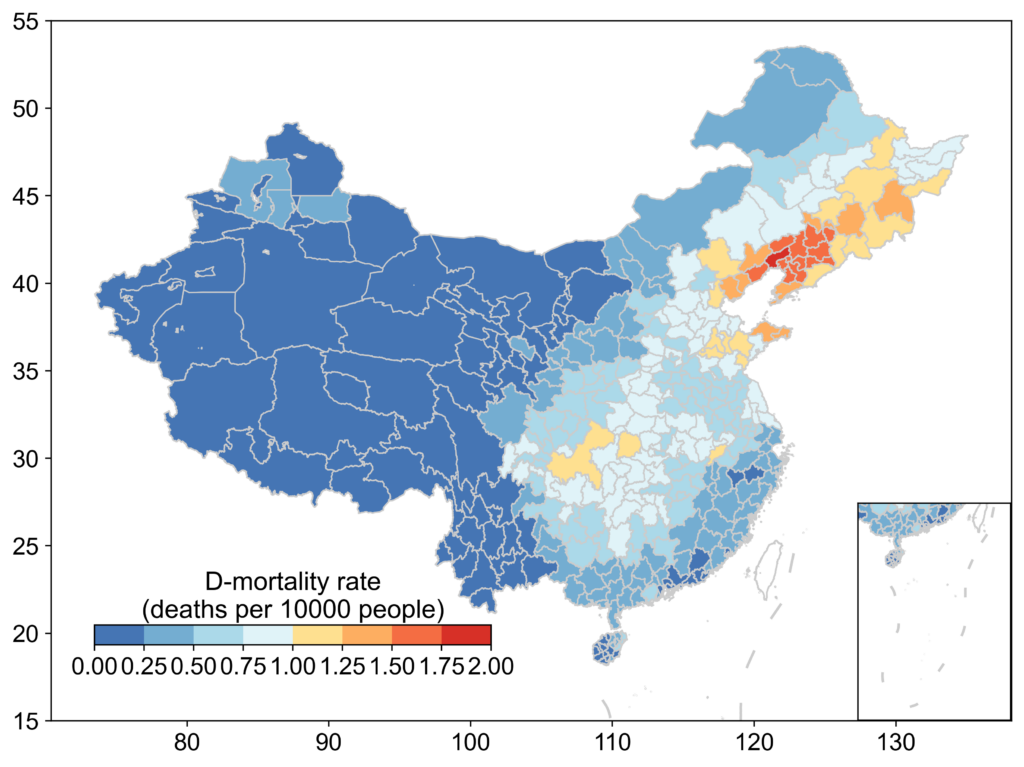CUHK
News Centre
CUHK reveals for the first time that higher meat consumption increases health and environmental inequity related to air pollution in mainland China
The Department of Earth and Environmental Sciences and the Institute of Space and Earth Information Science at The Chinese University of Hong Kong (CUHK) have conducted a groundbreaking air quality study in mainland China. This study revealed for the first time that the mortality rate due to air pollution arising from national dietary changes is twice as high among people in agricultural areas of mainland China as in more developed coastal regions. This discovery highlights the growing health and environmental inequity between these regions. The research results have been published in the international journal Communications Earth & Environment.
As the mainland Chinese economy has taken off, the dietary habits of its people have shifted from plant-based to meat-intensive diets, particularly among residents of developed coastal areas, driving up food production in agricultural regions. In 2010, agricultural areas of mainland China produced about 75% of the country’s grains and 68% of its meat. Agricultural activities, especially fertiliser use for feed crops and animal waste in livestock production, have not only intensified greenhouse gas emissions, but also release substantial amounts of nitrogen-containing pollutants such as ammonia, which generate particulate matter (PM2.5) pollution. Although previous studies have shown that changes in dietary habits exacerbate air pollution in agricultural areas of mainland China, the actual impact on human health and society remained unknown.
In light of this, the research team analysed the relationship between increased meat consumption in developed coastal areas of mainland China and the mortality rate caused by air pollution in poorer agricultural regions. They combined air quality models, exposure response models, inequality indicators and spatial statistical models, and found that with changes in dietary habits led to more frequent agricultural activities and intensified the uneven distribution of air pollution, resulting in 83 more deaths due to PM2.5 out of every million people in agricultural areas, which is twice the increase in developed coastal areas. In addition, the study found that the mortality rate was particularly high in the northeastern regions, where agricultural activities were the most intensive. The Gini coefficient[1] for PM2.5-related mortality rates after the dietary changes was 0.197, while it was 0.189 before the dietary changes. This indicated that the changes in dietary habits have widened the mortality gap due to air pollution between developed coastal and poorer agricultural areas, inevitably worsening health and environmental inequity.
Professor Amos Tai Pui-kuen, Associate Professor of the Department of Earth and Environmental Sciences, and leader of the study, said: “While mainland China’s clean air policy has notably improved air quality in recent years, air pollution arising from agricultural emissions has yet to be addressed. This study further shows that the rising food demands from richer regions in mainland China have disproportionately increased air pollution in poorer regions. This has laid a greater health burden onto the farmers there, indirectly worsening economic inequality as a whole.”
Professor Kwan Mei-Po, Choh-Ming Li Professor of Geography and Resource Management, and co-leader of the study, added: “This study underscores the important role of food system transformation in addressing Sustainable Development Goals (SDGs) related to hunger, climate action and reduced inequality. It provides new insights for achieving multiple SDGs synergistically and moving toward a more socially equitable and environmentally sustainable future.”
[1] A method for measuring distribution inequality; the larger the value, the greater the disparity between the two.





